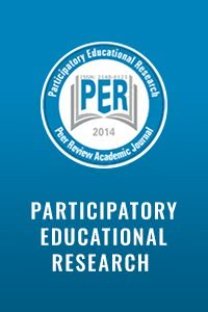Physical state of schools in Ottoman State in the early 20th century
The purpose of this study is to investigate physical condition of schools past and today in Turkey. We have selected some schools, which was located in documents. We have give information about this schools’ physical condition. The physical states of schools are one of the necessary conditions for proper education to be effectively realized. That physical structures can be better in conditions depends on the economic conditions or rate of budget allocated to schools. The higher this rate, the more will be its reflections on education. The number of classrooms in the schools will affect the number of students in the classroom, especially the order and management of classroom, and the efficiency of the course. In the historical process, the determinations regarding the physical structure of schools are recognized through the documents recorded during the supervision of schools. In this study, the information and documents examined the physical states of the primary and secondary schools providing education in Ottoman State. Thus, the developments from the history to the present days will be provided to be better understood. On the other hand, the period the last years of Ottoman State. It was observed that, physical facilities of schools were not enough in the past. But good faith efforts were made. Presently, review issues of the past were taken into consideration. This situation indicates the educational approach in the history. This study shows urban education facilities in past.
Keywords:
Education, schools, physical facilities, 20th century history,
___
- Prime Minister Ottoman Archive (BOA) Documents: BOA., MF.HTF.5-115, 1336.N.7. BOA., MF.HTF., 5-5. BOA., MF.HTF, 4-61, 1335.Ra.27.
- Chairman Of The Supervisory Board, Provincial And District Directorates Of National Education Audit Guide (2010). Ministry of Education, Ankara. Guidance And Supervision Presidency
- Başar, Mustafa Aydın, (2000), Staff and Physical Possibilities of Primary Schools, The Journal of PAÜ Education Faculty, Volume:8, pp.134-140.
- Creemers, B. P., & Reezigt, G. J. (1999). The role of school and classroom climate in elementary school learning environments. School climate: Measuring, improving and sustaining healthy learning environments, 30-47.
- Elementary And Secondary Schools Guidance And Supervision Guide (2014). Ministry of Education, Ankara.
- Fraser, B. J. (2012). Classroom environment (Vol. 234). Routledge.
- Hein, G. E. (2004). John Dewey and museum education. Curator, 47(4), 413-427.
- Harris, D. N. (2006). Class size and school size: Taking the trade-offs seriously. Brookings papers on education policy, 2006(1), 137-161. Hesapçıoğlu Muhsin, Meriç Beyhan(1994), “The Design Of The School Building, Training Facilities in İstanbul and Turkey, Preliminary Analysis for Population, Education And The Economy” The Journal of Educatıon Science of M.Ü. Atatürk Educatıon Faculty, Volume:6, pp.123-148.
- Howley, A., & Howley, C. (2006). Small schools and the pressure to consolidate. education policy analysis archives, 14(10), 1-31.
- Lunetta, V. N., Hofstein, A., & Clough, M. P. (2007). Learning and teaching in the school science laboratory: An analysis of research, theory, and practice.Handbook of research on science education, 393-441.
- Karakütük and others, (2012) “The Adequacy of Physical Conditions of Public High Schools in Turkey According To Their Sizes”, Ankara University, Journal of Faculty of Educational Sciences, vol.45, no:2, 183-204
- Limberg, L., & Alexandersson, M. (2003). The school library as a space for learning. School Libraries Worldwide, 9, 1-15. Middle School Audit Guide (2010). Ministry ofEducation, Ankara.
- Rivkin, M. (1997). The schoolyard habitat movement: What it is and why children need it. Early Childhood Education Journal, 25(1), 61-66.
- Rubin, A., & Tamir, P. (1988). Meaningful learning in the school laboratory. The American Biology Teacher, 477-482.
- Şerif Ahmet, (1999),Turkish Historical Society , Tanin (Newspaper) of Anatolia, Translated, Mehmet Çetin Börekçi, Volume I, Ankara.
- Şerif, Ahmet, (1999) Turkish Historical Society, Tanin (Newspaper) of Albania, Syria, Tripoli, Translated, Mehmet Çetin Börekçi, Volume II, Ankara.
- Taşer, Seyit, (2011), The Last Period Of The Ottoman İntellectuals Views On Educational İssues, Education Publishing, Konya. mebk12.meb.gov.tr/meb_iys_dosyalar/46/02/.../24084611_okul.ppt
- ISSN: 2148-6123
- Yayın Aralığı: Yılda 6 Sayı
- Başlangıç: 2014
- Yayıncı: Özgen KORKMAZ
Sayıdaki Diğer Makaleler
Hakan TÜRKMEN, Damla Dilara TOPKAÇ
Melih KAZİMLAR, Yesim KESLİ DOLLAR
Fikile MBULİ, Norma R. A. ROMM
Bilal ÖZÇAKIR, Cahit AYTEKİN, Bülent ALTUNKAYA, Bekir Kürşat DORUK
Fatih ERDOĞMUŞ, Mıustafa KOKOÇ, Eda PİNAL, Şeval BİLGİ, Zeynep MURAT
